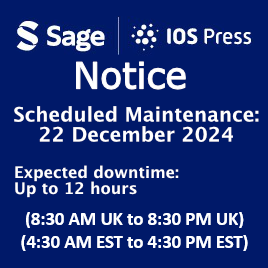Article type: Research Article
Authors: Gavrielov-Yusim, Nataliea; * | Barer, Yaelb | Martinec, Michaelc | Siadimas, Athanasiosc | Roumpanis, Spyrosc | Furby, Hannahd | Goldshtein, Inbalb; e | Jan, Asifc | Coloma, Preciosa M.c
Affiliations:
[a] Product Development Personalized Health Care – Data Science, Roche Pharmaceuticals, Hod HaSharon, Israel |
[b] Maccabitech Institute for Research and Innovation, Maccabi Healthcare Services, Tel Aviv, Israel
|
[c] Product Development Personalized Health Care – Data Science, F. Hoffmann-La Roche Ltd., Basel, Switzerland
|
[d] Product Development Personalized Health Care – Data Science, Roche, Welwyn, UK
|
[e]
Department of Epidemiology and Preventive Medicine, School of Public Health, Sackler Faculty of Medicine, Tel Aviv University, Tel Aviv, Israel
Correspondence:
[*]
Correspondence to: Natalie Gavrielov-Yusim, PhD, Product Development Personalized Health Care – Data Science, Roche Pharmaceuticals (Israel) Ltd., 6 Hacharash Street, Hod HaSharon, 4524079 Israel. Tel.: +972 52 8299889; E-mail: [email protected].
Abstract: Background:Huntington’s disease (HD) is a rare, genetic, neurodegenerative disease. Obtaining population-level data on epidemiology and disease management is challenging. Objective:To investigate the epidemiology, clinical manifestations, treatment, and healthcare utilization of patients with HD in Israel. Methods:Retrospective population-based cohort study, including 20 years of routinely collected data from Maccabi Healthcare Services, an insurer and healthcare provider for one-quarter of the Israeli population. Results:The study cohort included 109 adult patients (aged ≥18 years) diagnosed with HD, with mean age of 49.9 years and 56%females. The most common HD-related conditions were anxiety (40%), behavioral problems (34%), sleep disorders (21%), and falls (13%). Annual incidence rates for HD ranged from 0.17 to 1.34 per 100,000 from 2000 to 2018; the 2018 crude prevalence in adults was 4.36 per 100,000. Median survival from diagnosis was approximately 12 years (95%CI: 10.4–15.3). The most frequent symptomatic treatments were antidepressants (69%), antipsychotics (63%), and tetrabenazine (63%), the only drug approved for the treatment of HD chorea in Israel during the examined period. Patterns of healthcare utilization changed as disease duration increased, reflected by increased frequency of emergency department visits and home visits. Conclusion:This retrospective population-based study provides insights into the prevalence, incidence, clinical profile, survival, and resource utilization of patients with HD in ethnically diverse Israel. The findings in this study are generally consistent with the international literature and demonstrate the value of routinely collected healthcare data as a complementary resource in HD research.
Keywords: Huntington’s disease, Israel, real-world data, healthcare resource utilization, treatment patterns
DOI: 10.3233/JHD-210500
Journal: Journal of Huntington's Disease, vol. 10, no. 4, pp. 469-477, 2021
Published: 09 November 2021




